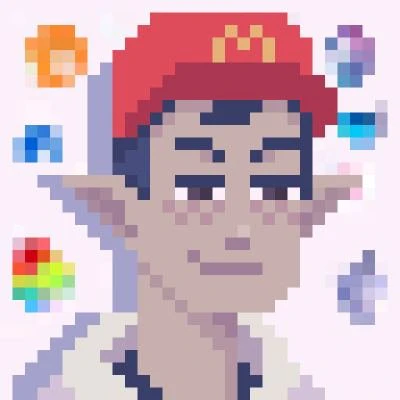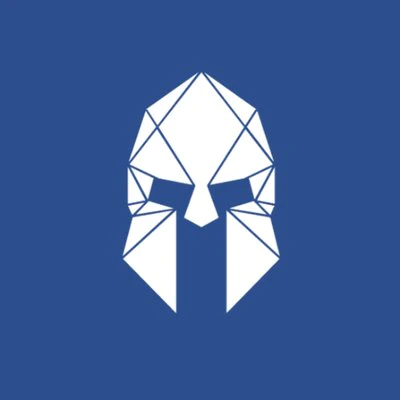Dialogue Darren Lau: The most ambitious crypto investor teaches you how to allocate funds
Compilation: The Path of DeFi
Original: 《https://thereadingape.substack.com/p/talking-crypto-ep-79-darren-lau?s=r》
Who is Darren Lau?

 His father is an accountant, and his mother is a housewife.
His father is an accountant, and his mother is a housewife.
Darryl is Darren's twin brother, and Zachary is their older brother.
He knew his interest was in finance when he was in school.
Schools in Malaysia are divided into two streams—science and arts (similar to the liberal arts and sciences division in China):
- He had no interest in biology, so he completely gave it up and switched to accounting.
- People did not understand this choice, as almost everyone wanted to pursue the science stream and study physics and chemistry.
How did Darren get into crypto?
He entered the space before the 2017 ICO bubble, just before China banned ICOs.
At that time, he met the CoinGecko team in Malaysia.


- CoinGecko was looking to hire full-time interns, so both Darryl and Darren joined.
- During DeFi Summer, they were both at CoinGecko, which listed coins faster than CoinMarketCap.
- As a result, CoinGecko gained a significant market share.
He closely followed the development of DeFi, as Darryl and he were always looking for ways to make money.
- While studying finance in college, he worked part-time at McDonald's, earning $2.5 an hour.
- He was not interested in college courses at all and often failed classes because he was always involved in crypto-related activities.
- He thought a 5% annual return on the SP500 was too low.
- He wanted to buy Tesla stock but couldn't in Malaysia, so they learned about Synthetix and fell down this "rabbit hole."
In March 2020, he wrote a book about DeFi, but it quickly became outdated due to the rapid development in the field.


- He wanted to update the content of the book, but he had no time to do so during that period.
- After liquidity mining became popular, he began promoting his outdated book on Twitter, which led to his following growing to over a hundred thousand.
In August 2020, he joined Spartan Group (a crypto VC) for nine months and left in May 2021, where he was responsible for engaging with new projects in the primary and secondary markets.
Views on DeFi Summer
It was interesting to see the influx of new capital.
- After SushiSwap, various food-themed projects emerged daily.
- On Twitter, people often shared which "food mines" they were mining, allowing others to see who was in control.
From then on, he learned some tricks, such as tracking wallets to discover new mines ahead of others.
What he learned at Spartan Group


Conduct thorough due diligence.
- Worked with Jason and Kelvin—both had strong TradFi backgrounds and analytical skills.
- Before discussing the advantages of an investment, he had to study discounted cash flow (DCF), revenue, expenses, etc.
- Typically, people do not pay attention to all this fundamental information and just blindly imitate, so he learned how to conduct due diligence before investing.
Liquidity constraints.
- He understood that VCs cannot invest in projects with a market cap below $10 million because they would face many issues if they wanted to exit.
Do some calculations.
Spartan's fund is about nine figures, so investing $100,000 and making 10x would only yield $1 million—an insignificant 1%.
He learned how to properly adjust position sizes to make them substantial.
When his portfolio was below $100,000, he invested 50% of his funds into YFI and NXM.
For YFI, Darren and Darryl had known Andre for a long time. Darren had helped Andre manage the community and had been using YFI products before the token launch. He always wanted to mine stablecoin because interest rates in Malaysia were below 3%, but YFI could offer 5-8%.
For NXM, it seemed that no one understood their pricing model very well, but Darren had figured out a formula to understand it, giving him an advantage over others.
How Spartan Group pitches projects
Jason and Darren take turns introducing projects based on fundamentals or potential catalysts, and they discuss to ensure their established theories are sound.
Each project pitch undergoes internal tracking to observe position situations.
They analyze underperforming holdings every month.
Spartan has two funds—venture capital fund + hedge fund.
The hedge fund is simply about shorting and going long, while the venture fund seeks investment projects in the primary market.
Darren recalled an impressive pitch:
- He recommended Axie Infinity because he saw the project had a strong community, and players were genuinely making money.
- People from Delphi were also involved in the tokenomics of this project; they always knew what they were doing.
- Their cash flow was very positive.
- (Before the token launch) Darren introduced this project to Spartan, believing the company needed to focus on other niche markets (unexploded markets) to hedge against DeFi—just in case DeFi declined. However, Jason and Kelvin were not optimistic about gaming projects, and they felt the design of the protocol was not serious at all.
Leaving Spartan
He had learned a lot at Spartan and wanted to find opportunities to apply what he learned.
Spartan raised a $100 million venture capital fund, so he had to make many calls (40 calls a week).
- He had no time for anything else, not even research, and thus missed many money-making opportunities.
- Some projects would typically offer some allocations, but for a fund the size of Spartan, a $100,000 allocation was meaningless because it was insignificant.
- At that time, he felt his Twitter and Telegram groups had reached a certain scale, allowing him to make a big move.
Rapid growth of Twitter and Telegram channels
On Twitter, he always tried to form his own opinions on what was happening in the crypto space daily to stay updated.
As for the Telegram group, he had been doing similar things at Spartan, focusing on a range of areas and discussing them to take specific actions.
- He found that no one was doing this, so he did it himself.
- At that time, email subscriptions were still mainstream, so he started pushing daily must-read content in the Telegram group.
On primary and secondary market trading
Primary market:
Look for founders who understand the market and whom he likes.
At that time, they no longer cared whether their investments would go to zero; at least they were helping others.
He wanted to see these people succeed, so they were willing to provide funding.
He preferred to find innovative projects rather than doing the same thing as other projects.
Many projects at that time were simple forks.
Secondary market:
Who is on the team, who are the supporters, what is the project's goal, does it align with the current narrative, and how does it differ from other competitors?
Liquidity—what impact does investing $10,000 or $100,000 have on the project?
How quickly can they enter and exit, and how little damage can it cause?
Many people have the habit of tracking wallets, so he did not want his positions to be too large; if he sold, it could cause a liquidity disaster.
Using Nansen to track data.
Portfolio allocation
He has a large amount of funds in stablecoin mining because he wants to set up a safety net in case other holdings go to zero.
He has a portion of funds for long-term holding, maintaining a strong conviction.
Finally, he uses 10% of his funds to ape into new projects.
- He traveled to Europe for two months but kept a small amount of ape funds available to invest in new projects while traveling.
European trip
Met many people he had chatted with online for a long time.
Found opportunities to step away from the market and take a break.
Best food: Matcha caramel pudding.
Worst food: He had high expectations for Italian food, but found it quite bland when he got to Italy.
What should people do after achieving their goals?
For how much money to earn, almost everyone has a number in mind, but when they achieve that goal, they often feel lost.
Darren's advice is to cash out profits and use the funds to mine stablecoins for at least a week.
- To hedge against risk, he spreads his money across 10 stablecoin mines.
- Consider buying insurance for these protocols.
Think about what to do next.
Take out a small portion or what you think you can afford to risk, and move towards your goals again.
- This allows you to prove that you are not just lucky.
- It also challenges yourself after achieving your goals.
This is the lowest-risk method; stablecoin mining should be able to cover all your living expenses and achieve complete financial independence.
Investment categories
Infrastructure—Pocket Network, an infrastructure middleware protocol.
Gaming—many of these games are still in development, and he will closely monitor their progress as they will set examples for future games.
- He wants to see a game that can be played even in a bear market.
DeFi—wants to see more financial services.
- Lending without KYC will be a disruptor.
- More people should enter DeFi.
- He has no special preference for any particular chain, as long as it is excellent and interesting.
DAO—because of DAOs, more ordinary people are entering the crypto space.
- They cannot be considered ordinary people; they are essentially a lost generation wanting to change the world.
NFT—missed this round of NFTs.
- Missed many NFT projects.
- He thinks the Loot community is very similar to YFI, so this is the only NFT he has promoted.
- He feels excited about it, but the hype seems to have faded.
- Loot is one of his favorite NFTs.
Not3Lau Capital
This blue fat cat is named Billy.

There is a YouTube channel called Bongo Cats, featuring a white cat singing.
Darryl made a similar meme but changed the color to blue.
- He created a meme for DeFi blue chips, so he turned the cat blue.
- This cat then became the mascot of Not3Lau Capital.
General advice
Understand everything about the projects you trust the most, and then ape in.
Stay updated.
- Don't forget about a project after buying it, as narratives can change, and theories can be challenged.
- There are many inefficiencies in the market, so discovering these issues requires constant updating.
- Cryptocurrency may be the best wealth opportunity for this generation in recent years, so if you become complacent and do not keep up with the times, you will miss out on significant gains.
- Darren follows @Cryptoyieldinfo on Twitter, saying he has valuable insights.
- Subscribe to The Daily Ape.
Looking at market cap rather than price helps understand whether a project is undervalued or overvalued.
Have a system to track your holdings, see how each holding performs, and evaluate them.
Reduce the number of your holdings, as you do not have enough time to pay attention to everything.
Look at the secondary market where tokens have already traded, rather than the primary market where tokens have not yet traded. However, tokens in the primary market will be locked for a long time, so it is better to have more liquidity.
Work hard for a few years: "Would you rather work 80 hours a week and never work again, or work 40 hours a week for 50 years?"
The earlier you enter means a lower chance of being a bag holder.








